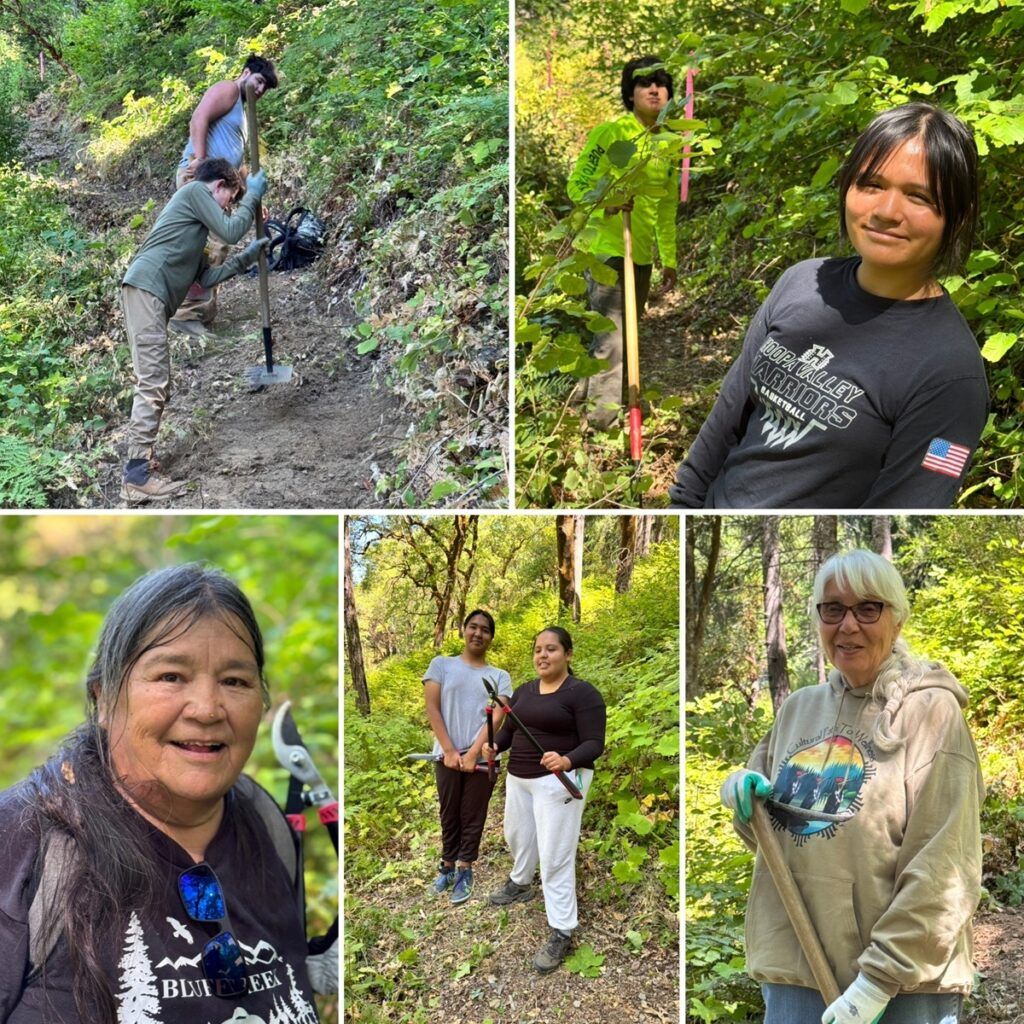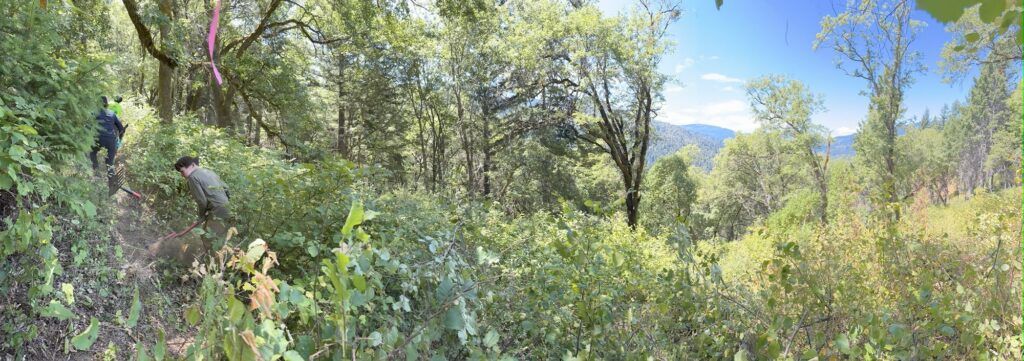This summer, the Bigfoot Trail Alliance had the honor of working alongside the Hoopa Valley TANF Program, Tribal elders, and youth to help reestablish a historic trail leading into a hazel (Corylus cornuta) harvesting site. For time immemorial, hazel has been a vital plant for Indigenous communities throughout the Klamath Mountains, specifically valued for its strong, flexible shoots used in basketry.

The trail we worked on is more than a path through the forest—it is a cultural thread. In recent history, families such as Debbie McConnell’s have maintained this route through cultural burning and careful trail building, ensuring continued access to hazel groves for basket weavers. The last major rehabilitation of this trail was in 2006, and the invitation to assist in its renewal was both a privilege and a responsibility.
Our role as the Bigfoot Trail Alliance was to bring tools, safety training, and trail-building skills to support the project. Yet, the true gift of this work was in the relationships: listening to the elders share stories of the site’s deep significance, and watching Tribal youth carry those teachings forward while learning hands-on skills. Together, we cleared brush, opened pathways, and reconnected people to a place where culture, ecology, and tradition are inseparable.

The hazel trail project reminds us that stewardship is not only about tools and sweat—it is about honoring the stories and values that shape the land. Standing shoulder-to-shoulder with Tribal partners, we were reminded that trails are not simply routes through the mountains, but lifeways that connect people across generations.
We are grateful to Debbie, the TANF Program, and all who welcomed us into this work. May the renewed trail continue to carry footsteps, stories, and baskets for many generations to come. We will continue this path of working with future stewards as we launch the Klamath Mountain Workforce Training Network. If you know of a young future steward aged 15-24, have them apply!


[…] Bigfoot Trail Alliance partnered with the Hoopa Valley TANF Program, tribal elders, and youth to restore a historic trail into a hazel-harvesting grove—an enduring thread linking ecology, culture and community. For generations, hazel (Corylus […]